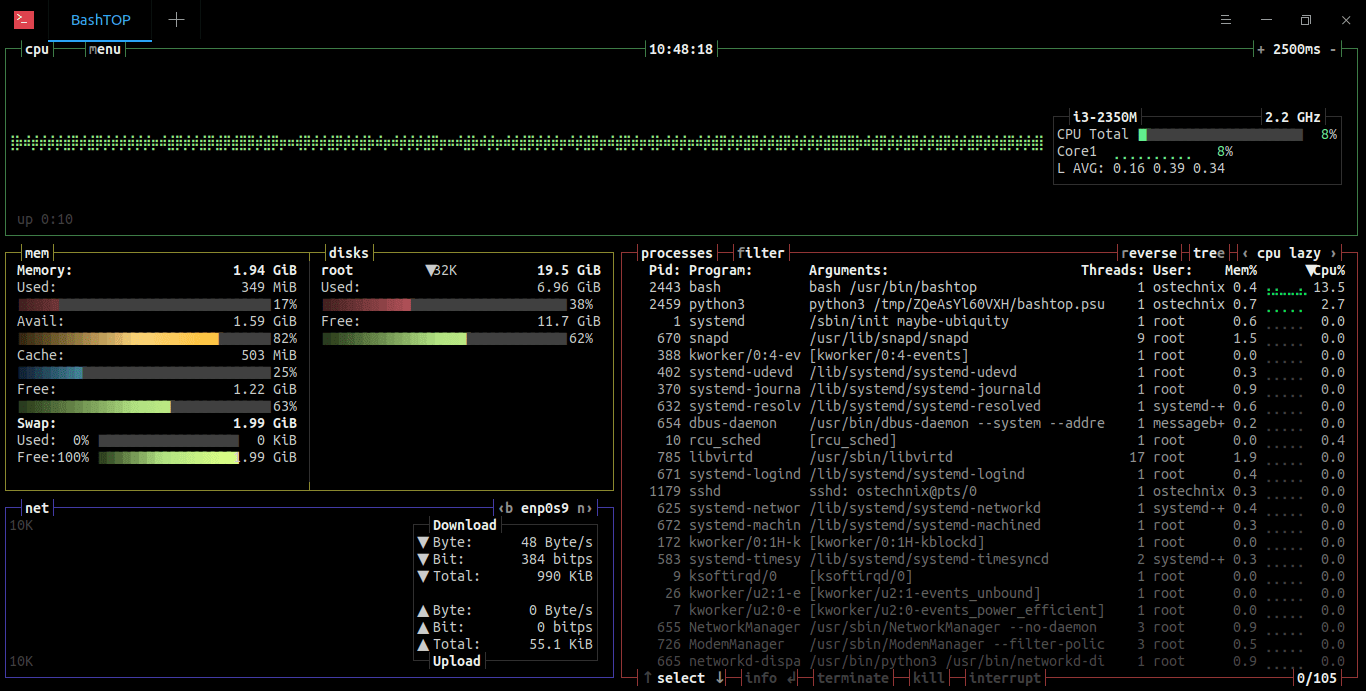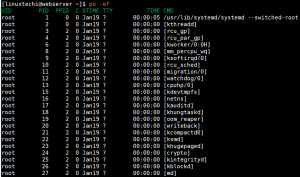


If you want to display threads from a specific process, use the ‘-p PID’ argument: ps -Lfp PID Using ‘grep’ The first thread’s ID and the process it originated from are always the same. IDs for each thread connected to a process are displayed here. Threads can also be shown alongside processes using the ‘L’ argument, which displays the LWP column. For example, the user ID (UID) is displayed rather than the username. The ‘-l’ parameter is similar to the ‘-f’ parameter in that it displays more information, but there are a few changes. To do this, you must first determine the process ID using ‘ps’ or even ‘top. Using the ‘-p’ argument, you can also view details about a particular process. For instance, you would issue the following command to list all processes associated with the root user: ps -u root $ root Specific Processes There are some choices to employ if you only want to read details about a certain process, processes belonging to specific users, or filter by process names. The ‘-F’ argument can be used to get even additional details. ps -eĬouple it with the -‘f’ parameter to get further details about a process, such as its parent process ID (PID) and the username it belongs to. The ‘-e’ argument prints a list of all processes and their details. You can use ps to see a list of all the currently executing processes on your computer. Linux’s most basic version of the ps command displays a list of the active processes in the current shell.

Here is a summary of some of the applications for PS. It prints out some process information about “ps” and the shell that “ps” was running from when it was used without any parameters. This Linux command is easy to use, like many others. It takes both standard style parameters (with a dash, such as “-e”) and BSD style arguments (without a dash), as well as GNU style syntax (those preceded by two dashes). It can also list only a few or all of the processes. The running status, user and group it belongs to, the process ID, and whether it was started from a terminal are all examples of information that can be provided. What is ps?Īn application called “ps,” which stands for “process state,” may read all of the process data on your computer, display the results on the terminal, and then shut down.

This manual will cover the ‘ps’ and ‘top’ commands each must be present in a typical Linux installation. Of course, it is not necessary to be for that. There will be a time when you need to learn more about a specific process frequently to get its ID so you can parse the “kill” command.


 0 kommentar(er)
0 kommentar(er)
